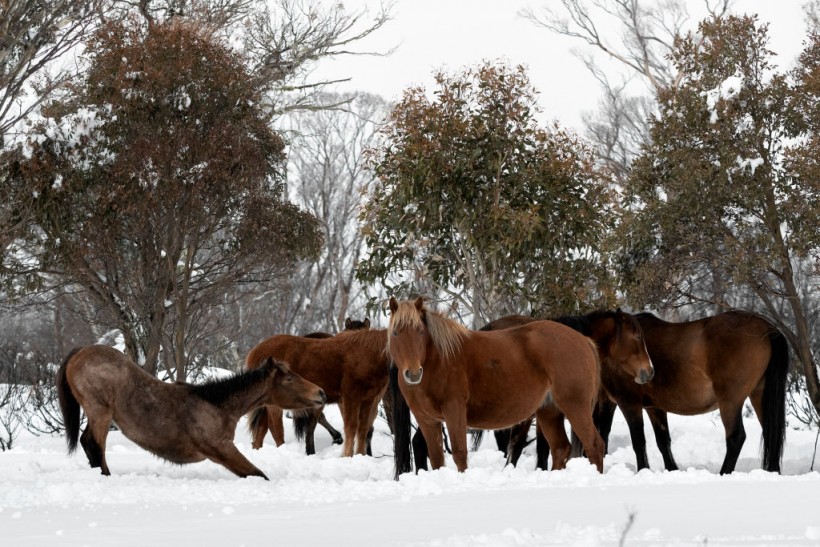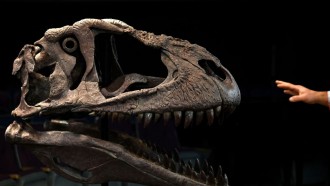The New South Wales (NSW) government of Australia has announced its decision to employ aerial shooting from helicopters to cull the surging population of wild horses in Kosciuszko National Park, News.com.au reports.
The brumby, a feral horse introduced to Australia during colonial times, has seen its population explode in the pristine landscapes of Kosciuszko National Park.
The park, known for its scenic beauty and unique wildlife, has witnessed severe environmental degradation due to the unchecked growth of the brumby population.

KOSCIUSZKO NATIONAL PARK, AUSTRALIA - AUGUST 24: A small herd of Brumbies affectionally named ‘the welcoming committee’ by local horse watchers rest in a patch of Snow Gums in the Long Plains area of the Kosciuszko National Park on August 24, 2020 in Kosciuszko National Park, Australia.
Why the Need to Cull Brumby Population
As per a legal mandate, NSW is obligated to reduce the wild brumby population in Kosciuszko National Park to 3,000 by mid-2027.
However, a 2022 survey revealed a staggering estimate of more than 14,000 brumbies, a clear indication of the urgency of action.
The environmental impact of this population explosion is dire. Reports say brumbies have been found to pose a significant threat to more than 30 native species, including the critically endangered southern and northern corroboree frogs, broad-toothed rats, and the she-oak skink.
Additionally, these feral horses contribute to the destruction of native plants, increased soil erosion, and the pollution of waterways and soil.
Penny Sharpe, the NSW Environment Minister, acknowledged the cultural significance of brumbies but emphasized that aerial shooting was a necessary measure to safeguard the welfare of the park's ecosystem.
"There are simply too many wild horses in Kosciuszko National Park. Threatened native species are in danger of extinction, and the entire ecosystem is under threat. We must take action," she stated.
Read Also: Can Cats Glow in the Dark? New Study Says 125 Mammal Species Have 'Apparent Fluorescence'
Shooting Down Wild Horses
The NSW National Parks and Wildlife Service will undertake a preliminary program in collaboration with the RSPCA NSW to refine a standard operating procedure for aerial shooting.
A carcass management plan and an updated population survey will also be made publicly available to ensure transparency in the culling process.
Sharpe highlighted that the shooting would be conducted as humanely as possible, and the decision was backed by the view that aerial shooting provides the best animal welfare outcomes when executed correctly.
Currently, aerial shooting is employed to control other invasive species, such as wild deer, pigs, and dogs.
The government will amend the Kosciuszko National Park Wild Horse Heritage Management Plan to facilitate aerial shooting, which previously relied on on-ground shooting, trapping, and relocation. These methods proved insufficient, especially after the brumby population increased by 4,434 between 2020 and 2022.
The move to employ aerial shooting came after a Senate inquiry recommended lifting the ban on aerial shooting of wild horses in Australia's alpine regions and urged the Commonwealth to increase funding to state governments for such initiatives.
According to local reports, Brumby supporters believe the pest should be protected because of its historical significance in settler life. They also claim that the brumby numbers are inflated.
Stay posted here at Tech Times.
Related Article: UK Scientists Unveil Traps to Battle Against Invasive Chinese Mitten Crabs






